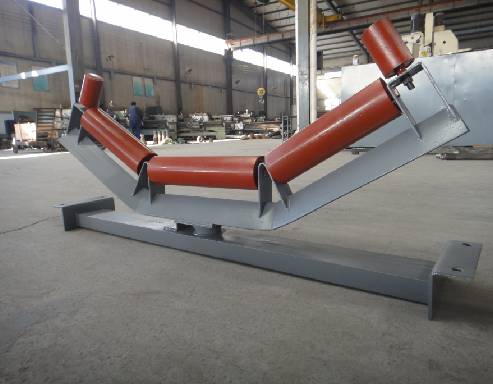 Afrikaans
Afrikaans  Albanian
Albanian  Amharic
Amharic  Arabic
Arabic  Armenian
Armenian  Azerbaijani
Azerbaijani  Basque
Basque  Belarusian
Belarusian  Bengali
Bengali  Bosnian
Bosnian  Bulgarian
Bulgarian  Catalan
Catalan  Cebuano
Cebuano  Corsican
Corsican  Croatian
Croatian  Czech
Czech  Danish
Danish  Dutch
Dutch  English
English  Esperanto
Esperanto  Estonian
Estonian  Finnish
Finnish  French
French  Frisian
Frisian  Galician
Galician  Georgian
Georgian  German
German  Greek
Greek  Gujarati
Gujarati  Haitian Creole
Haitian Creole  hausa
hausa  hawaiian
hawaiian  Hebrew
Hebrew  Hindi
Hindi  Miao
Miao  Hungarian
Hungarian  Icelandic
Icelandic  igbo
igbo  Indonesian
Indonesian  irish
irish  Italian
Italian  Japanese
Japanese  Javanese
Javanese  Kannada
Kannada  kazakh
kazakh  Khmer
Khmer  Rwandese
Rwandese  Korean
Korean  Kurdish
Kurdish  Kyrgyz
Kyrgyz  Lao
Lao  Latin
Latin  Latvian
Latvian  Lithuanian
Lithuanian  Luxembourgish
Luxembourgish  Macedonian
Macedonian  Malgashi
Malgashi  Malay
Malay  Malayalam
Malayalam  Maltese
Maltese  Maori
Maori  Marathi
Marathi  Mongolian
Mongolian  Myanmar
Myanmar  Nepali
Nepali  Norwegian
Norwegian  Norwegian
Norwegian  Occitan
Occitan  Pashto
Pashto  Persian
Persian  Polish
Polish  Portuguese
Portuguese  Punjabi
Punjabi  Romanian
Romanian  Russian
Russian  Samoan
Samoan  Scottish Gaelic
Scottish Gaelic  Serbian
Serbian  Sesotho
Sesotho  Shona
Shona  Sindhi
Sindhi  Sinhala
Sinhala  Slovak
Slovak  Slovenian
Slovenian  Somali
Somali  Spanish
Spanish  Sundanese
Sundanese  Swahili
Swahili  Swedish
Swedish  Tagalog
Tagalog  Tajik
Tajik  Tamil
Tamil  Tatar
Tatar  Telugu
Telugu  Thai
Thai  Turkish
Turkish  Turkmen
Turkmen  Ukrainian
Ukrainian  Urdu
Urdu  Uighur
Uighur  Uzbek
Uzbek  Vietnamese
Vietnamese  Welsh
Welsh  Bantu
Bantu  Yiddish
Yiddish  Yoruba
Yoruba  Zulu
Zulu Components and Features of Roller Conveyor Systems for Efficient Material Handling
Understanding Roller Conveyor Components A Key to Efficient Material Handling
In today’s fast-paced industrial environment, the efficiency of material handling systems is crucial for maintaining productivity and minimizing operational costs. Among various material handling solutions, roller conveyor systems stand out due to their versatility and adaptability. At the heart of these systems are the roller conveyor components, which play a vital role in ensuring smooth and efficient movement of goods.
What is a Roller Conveyor?
A roller conveyor is a type of conveyor system that utilizes rollers to transport items from one point to another. These systems are primarily used for moving packages, pallets, and various goods within warehouses, manufacturing plants, and distribution centers. The design of a roller conveyor allows for movement in a straight line, and they can be inclined or declined to facilitate gravity-driven transportation.
Key Components of Roller Conveyors
1. Rollers The most fundamental component of a roller conveyor, rollers come in various materials such as steel, plastic, or aluminum. They can be powered or unpowered (gravity), depending on the application. Powered rollers are used in applications requiring controlled movement, such as belt-driven conveyors, while gravity rollers allow products to move downwards by gravity.
2. Frame The frame serves as the structural backbone of the conveyor system. Typically made from steel or aluminum, the frame is designed to support the weight of the rollers and the items being transported. A robust and durable frame is essential for ensuring the longevity and reliability of the conveyor.
3. Drive System The drive system is responsible for providing the necessary power to move the rollers in powered roller conveyors. This may include motors, gears, and belts that work together to create motion. The choice of drive system can vary based on the application, the weight of the materials, and the desired speed of transportation.
4. Supports and Legs These components provide stability to the roller conveyor. Support brackets and legs can be adjusted to accommodate varying heights or configurations of the conveyor system. Proper support is crucial to maintain alignment and ensure that the conveyor operates smoothly.
roller conveyor components

5. Belts and Chains In powered roller systems, belts or chains may be used to connect the rollers and facilitate movement. These elements work in tandem with the drive motor to ensure that each roller rotates correctly, allowing for efficient transport of goods.
6. Controllers Modern roller conveyor systems often have controller units that regulate speed and direction, allowing for automated operations, particularly in complex systems with multiple conveyor lines. These controllers can be integrated with warehouse management systems for enhanced functionality.
7. Safety Features Safety measures, such as emergency stop buttons, guards, and sensors, are essential components of roller conveyors. These features ensure that the system can be halted quickly in case of an emergency, protecting both personnel and equipment from harm.
Benefits of Roller Conveyors
The use of roller conveyors in material handling offers several advantages. They are highly customizable, able to fit various layouts and workflows within a facility. The maintenance costs are relatively low, especially in comparison to belt conveyors. Additionally, roller systems can easily be expanded or modified to meet changing production needs.
The load distribution capabilities of roller conveyors also reduce the risk of damage to goods during transit. The smooth operation minimizes product wear and tear, making them ideal for handling delicate items.
Conclusion
In conclusion, roller conveyor components are essential for designing efficient material handling systems. Understanding each component's role and function helps industries select the appropriate configuration for their specific needs. As technological advancements continue to evolve, roller conveyors remain a reliable choice for businesses looking to improve their operational efficiency and workflow. Investing in high-quality components and proper maintenance ensures that roller conveyors will serve as a backbone for logistics and handling operations for years to come.
-
Revolutionizing Conveyor Reliability with Advanced Rubber Lagging PulleysNewsJul.22,2025
-
Powering Precision and Durability with Expert Manufacturers of Conveyor ComponentsNewsJul.22,2025
-
Optimizing Conveyor Systems with Advanced Conveyor AccessoriesNewsJul.22,2025
-
Maximize Conveyor Efficiency with Quality Conveyor Idler PulleysNewsJul.22,2025
-
Future-Proof Your Conveyor System with High-Performance Polyurethane RollerNewsJul.22,2025
-
Driving Efficiency Forward with Quality Idlers and RollersNewsJul.22,2025





























